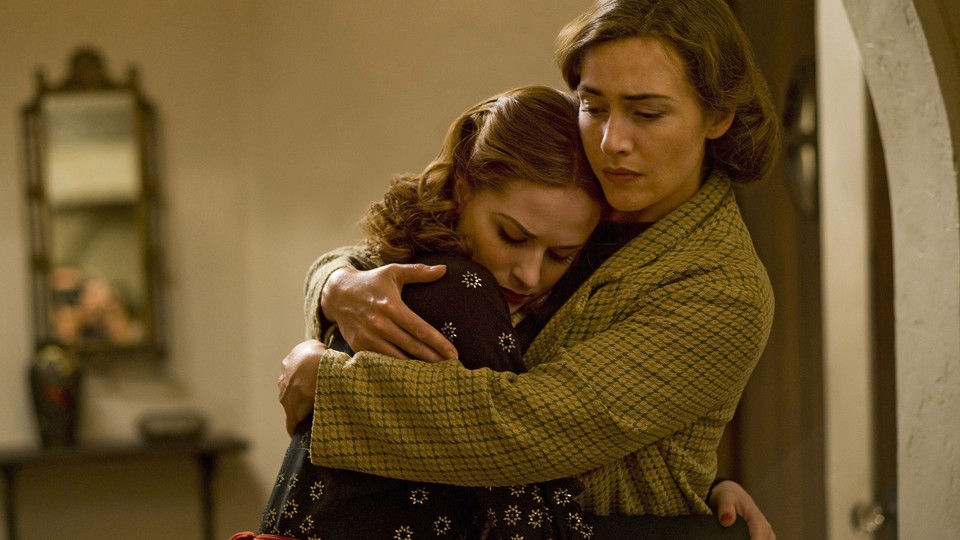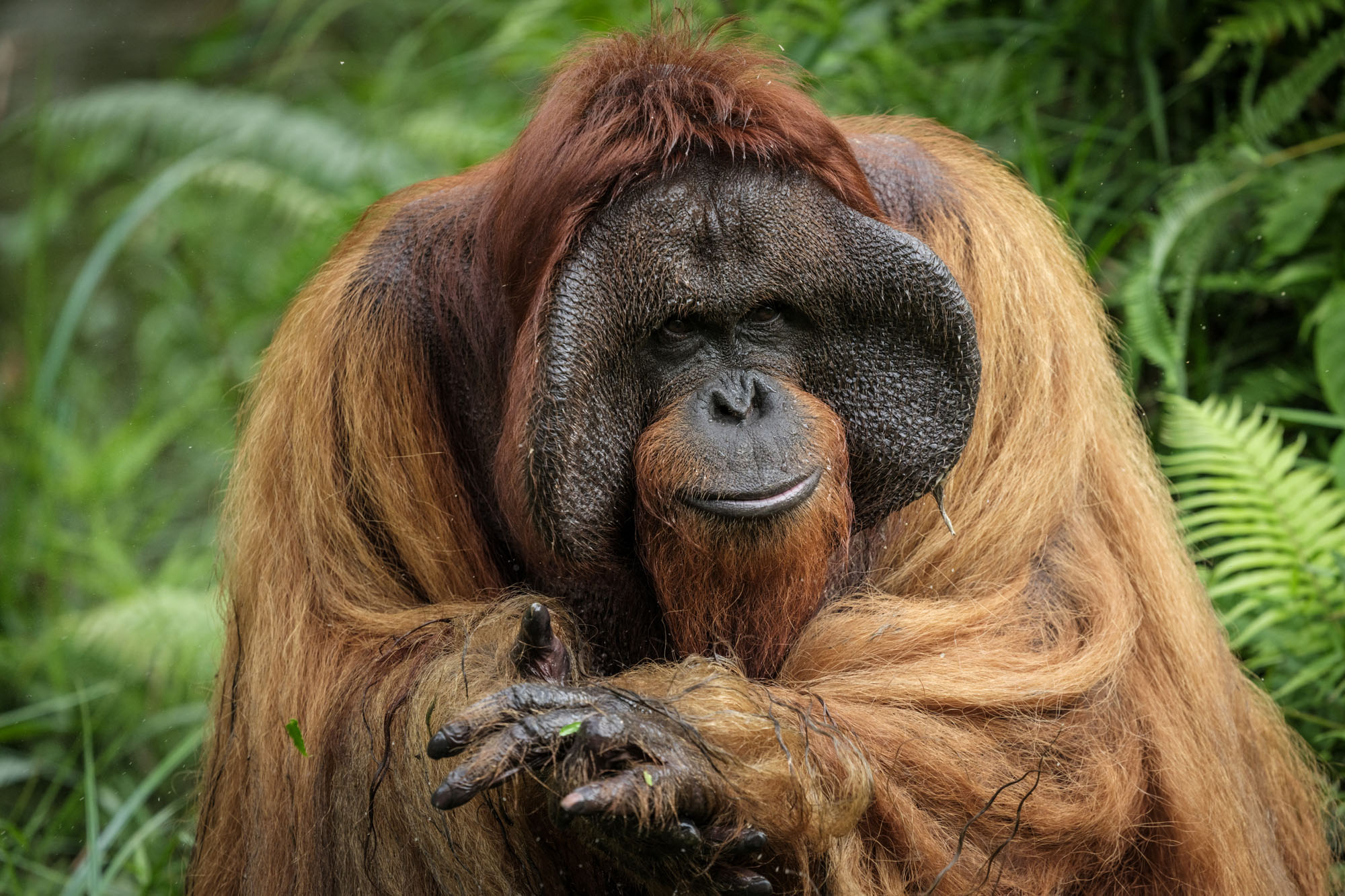What Makes Kate Winslet So Surprising
7 min read
This is an edition of The Atlantic Daily, a newsletter that guides you through the biggest stories of the day, helps you discover new ideas, and recommends the best in culture. Sign up for it here.
Welcome back to The Daily’s Sunday culture edition, in which one Atlantic writer or editor reveals what’s keeping them entertained. Today’s guest is senior editor Matt Seaton, who has written about a happiness expert’s frank advice for Joe Biden and a game of cricket that turned into a diplomatic incident.
Matt enjoys watching Kate Winslet play against what one might call her English-rose type, would bring the audiobook of Charlotte Brontë’s Villette to a desert island, and returns often to a Robert Frost poem that is both nature writing and its complete opposite.
First, here are three Sunday reads from The Atlantic:
- Congress accidentally legalized weed six years ago.
- The fakest populism you ever saw
- Why you should trust your gut
The Culture Survey: Matt Seaton
An actor I would watch in anything: I was a latecomer to admiring Kate Winslet. For the first 20 or so years of her career, I could see that she was leading-lady material but couldn’t understand what the fuss was about. That really changed with her performance in the title role of the HBO miniseries Mildred Pierce (2011, though I caught up with it later than that); she was also memorable in the 2015 film The Dressmaker, and great again in another HBO show, Mare of Easttown (2021). I think what finally got my attention was how she excelled at playing against what I’d taken to be her English-rose type, and showed a more complex side that’s steel and grit layered over a prickly vulnerability. I’m a convert now. [Related: The real twist of Mare of Easttown]
A quiet song that I love, and a loud song that I love: For a quiet song, I’ll choose “My Old Friend the Blues,” as recorded by the Proclaimers—a wonderfully improbable cover of a great Steve Earle song. Earle is a favorite of mine in his own right: Probably the best gig I ever saw was when he toured with the Del McCoury Band, which involved the ensemble standing around a big old mic and stepping in to sing or play a solo, the Grand Ole Opry way. Earle’s melancholy song voiced in soulful Scottish accents is one of those rare improvements on the original.
And this mention of the Reid brothers from Leith, Scotland, takes me indirectly to my loud choice, from the belting Northern Irish contingent of the U.K.’s punk and postpunk scene. Stiff Little Fingers’ “Gotta Gettaway” is my pick; I was a tame teenager, in truth, but this driving punk anthem about escape from conformity moved my inner mosh pit, and it still does.
A musical artist who means a lot to me: After that raucous ruckus, this may seem strange, but I was brought up to have a soft spot for Baroque music (a taste I also share with my wife). Some years ago, Christoph Willibald Gluck’s Orfeo ed Euridice got me through a difficult time in my life. I think it may have been because something so surpassingly beautiful forces you to believe in the triumph of the human spirit. That said, years later, I went to a production at the Metropolitan Opera and was a little taken aback: I knew the tragic myth of Orpheus and knew Gluck’s music inside out, but I had never read the libretto in translation or even a synopsis of the opera’s plot, so I was probably the only person in the audience who experienced the happy ending as an anticlimax. Ridiculous, really—the music should have told me.
The last museum or gallery show that I loved: This is going back a bit, but I will never forget a show I saw in 2020 at the ever-superb Jewish Museum featuring work originally curated by a groundbreaking New York art dealer named Edith Halpert. From the mid-1920s to 1970, her Downtown Gallery championed American artists, some of whom became household names. The exhibit was a cornucopia of mostly representational artwork from the period before abstract expressionism became the Official American Art. A piece by a fairly obscure printmaker named Victoria Hutson Huntley so struck me that I ended up on a quest to track down her work, and now I have one of her prints in my study.
Something I recently rewatched, reread, or otherwise revisited: Years ago, a close friend at university told me that Charlotte Brontë’s Villette was by far her favorite novel, the one she’d take to a desert island. I couldn’t get on with it. That vaguely haunted me, and having become a devotee of audiobooks, I decided recently to try again. Villette read aloud—a rendering that can work its alchemy with any title—was a revelation. The story of Lucy Snowe, a young Englishwoman obliged to earn her way as a schoolteacher in a provincial town loosely based on 19th-century Brussels, and her perplexed romantic life seems to me now perhaps the richest, most rewarding experience of fiction I’m ever likely to know. Brontë’s ability to draw characters, dramatize their tangled relations, and above all illuminate Lucy’s inner life is simply a marvel. The audiobook is packed for my desert-island stay. [Related: Alexander Chee on what writing parties reveals about characters]
A poem, or line of poetry, that I return to: I’m not a great student of poetry, so this is a rather predictable choice of poet, but a poem of Robert Frost’s abides with me. Not, in fact, the very well-known “Mending Wall” (though I happen to like mending the stone walls around our home in Vermont) but a short poem known simply by its first line, “In Winter in the Woods Alone.” Again, I relate to the poem’s ostensible subject, which is about chopping down a maple tree, but the poem ends thus as the speaker leaves the snowy woods at dusk: “I see for Nature no defeat / In one tree’s overthrow / Or for myself in my retreat / For yet another blow.” It’s nature writing, but it’s also the opposite of nature writing. Frost presses upon us the speaker’s antagonism despite the declared truce, and makes apparent that this imagined conflict between man and nature is pure projection—a product of the human will to master. In three short stanzas, you have to reckon with all of that. These days, I try to get our firewood from fallen or dead timber.
The Week Ahead
- Deadpool & Wolverine, the third movie in Marvel’s Deadpool series, starring Ryan Reynolds and Hugh Jackman (in theaters Friday)
- The 2024 Summer Olympics, in Paris (opening ceremony on Friday)
- Liars, a new novel by Sarah Manguso about the dissolution of a marriage (out Tuesday)
Essay

Why Parents Don’t Mind If Their Kids Don’t Marry
By Stephanie H. Murray
Few generational stereotypes are more familiar to Americans than the overbearing mother needling her grown children to settle down and start a family. But it may be time to retire that cliché. A recent survey by Pew Research Center found that only 39 percent of registered U.S. voters say “society is better off if people make marriage and having children a priority,” and a majority say society is “just as well off if people have priorities other than marriage and children.” This followed earlier Pew research showing that most young adults feel little to no pressure from their parents to marry or have kids, and that most parents do not consider it “important” whether their kids do so.
Findings such as these—as well as a data point from Pew last year that 88 percent of parents consider it “extremely” or “very” important for their children to be financially independent and have jobs or careers they enjoy—have prompted some commentators to worry that Americans have their priorities out of line, placing money and career above relationships and family. But the real story of how parents’ attitudes toward these subjects have changed is more complicated than workism run amok.
Read the full article.
More in Culture
- Dr. Ruth, Richard Simmons, and the joys of eccentricity
- The remarkable charisma of Shelley Duvall
- Seven bedside-table books for when you can’t sleep
- The church of Saint Richard
- Not your typical prison drama
- Simone Biles and the limits of “work ethic”
- The cheapness of luxury
- Please see Twisters in theaters.
- “How I faked my way to rock stardom”
Catch Up on The Atlantic
- The end of Biden’s candidacy approaches.
- The new Trump is always the old Trump.
- What the Microsoft outage reveals
Photo Album

Check out photos from the past week of an orangutan rehabilitation center in Borneo, an iceberg-filled fjord in Greenland, scenes from the Republican National Convention, and more.
Explore all of our newsletters.
When you buy a book using a link in this newsletter, we receive a commission. Thank you for supporting The Atlantic.



